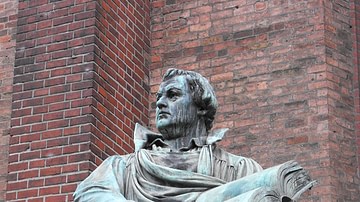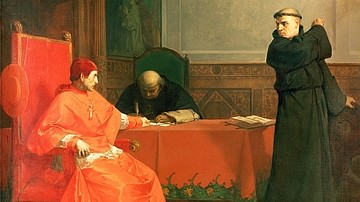Illustration
This map illustrates the major religious divisions across Europe during the 16th century, a period marked by the sweeping changes of the Reformation. As Protestant movements challenged the authority of the Catholic Church, the religious landscape of the continent fractured into competing confessions, reshaping political alliances and cultural identities.
While Protestantism spread rapidly in parts of northern and central Europe, Catholicism remained dominant in the south and west. In Eastern Europe and the Balkans, Orthodox Christianity held firm even as Islam, introduced through Ottoman expansion, gained a foothold. In these border regions, religious coexistence, competition, and conflict created a complex and often volatile mosaic. The map captures a moment when faith, politics, and power were deeply intertwined in shaping Europe's future.
About the Author
Cite This Work
APA Style
Netchev, S. (2021, December 09). Dominant Religions in Europe, 16th Century. World History Encyclopedia. Retrieved from https://www.worldhistory.org/image/14972/dominant-religions-in-europe-16th-century/
Chicago Style
Netchev, Simeon. "Dominant Religions in Europe, 16th Century." World History Encyclopedia. Last modified December 09, 2021. https://www.worldhistory.org/image/14972/dominant-religions-in-europe-16th-century/.
MLA Style
Netchev, Simeon. "Dominant Religions in Europe, 16th Century." World History Encyclopedia. World History Encyclopedia, 09 Dec 2021, https://www.worldhistory.org/image/14972/dominant-religions-in-europe-16th-century/. Web. 27 Apr 2025.








